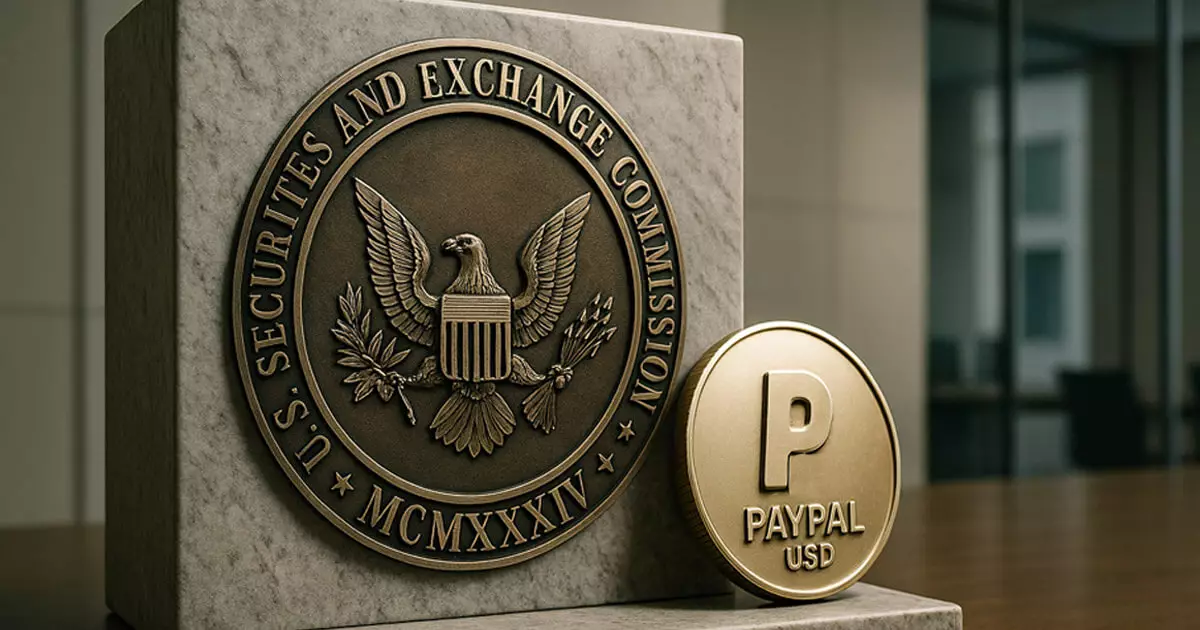The recent decision by the U.S. Securities and Exchange Commission (SEC) to terminate its inquiry into PayPal’s stablecoin, PYUSD, marks a pivotal moment in the digital asset landscape. Initially sparked by a subpoena in late 2023, which left industry insiders in a frenzy about the potential classification of PYUSD as an unregistered security, the SEC’s resolution brings much-needed clarity. This is not just a fleeting moment of relief; it’s a beacon of hope for those advocating for innovation within the digital financial ecosystem, relieving a significant cloud of regulatory uncertainty for both PayPal and its partner Paxos.
It is easy to overlook the implications of this decision, particularly in a climate often characterized by strict regulatory scrutiny. The end of this inquiry not only alleviates concerns about potential enforcement actions but also suggests a more open-minded approach to stablecoin frameworks as a whole. The SEC’s decision aligns with the sentiment that regulatory oversight should not quash innovation but rather shape it responsibly, allowing for a healthier coexistence of innovation and compliance.
PYUSD: The Future of Payment Solutions?
Launched by Paxos in August 2023, PYUSD was designed as the first stablecoin oriented towards payments from a major U.S. fintech giant. Despite its market cap hovering around a modest $879 million—less than half a percent of the global stablecoin market—the implications of its success could ripple outwards, fundamentally altering how transactions are conducted. The fact that PayPal is actively encouraging over 20 million small businesses to adopt this digital currency in 2025 reflects its ambition to transpire beyond mere speculation and toward practical utility.
In a world where traditional card networks have long dictated the rules of the road, PayPal’s ambition to build stablecoin-based payment rails could disrupt entrenched financial institutions and empower users. This is more than just an incremental innovation; it is a potential game-changer that might outpace even the most established players in the financial landscape.
Challenging the Incumbents: A Shift in Power Dynamics
While prevailing competitors like USDT and USDC hold significant footholds in the market, PayPal’s narrative builds a case for a revolutionized payment infrastructure. The company’s strategic moves—including the waiving of trading fees and quick liquidity options—demonstrate a calculated effort to eliminate barriers for users and advocate for wider adoption of PYUSD.
Moreover, the transformation of the stablecoin space, traditionally viewed through a lens of skepticism, has become a fertile ground for competition, allowing forward-thinking entities like PayPal to capture a meaningful audience seeking alternatives. The potential to bypass standard card networks signals a disruptive shift, shattering complacency among existing financial giants and urging them to adapt or perish.
What This Means for Regulatory Practices
Despite the positive outcomes for PayPal, the lingering uncertainties surrounding digital asset regulation can hardly be ignored. The SEC’s withdrawal from an enforcement action is an encouraging sign, yet it does not eliminate the complex landscape that still exists for stablecoins. The recent associates of “Covered Stablecoins,” which fall outside the usual regulatory spectrum, highlight an urgent need for clear governance mechanisms.
The GENIUS Act, potentially offering a tailored regulatory framework for stablecoins, presents an avenue for Congress to take a proactive stance rather than being reactive. Legislators must acknowledge that merely regulating for the sake of regulation is not the path to growth; instead, they should strive toward building frameworks that foster innovation while also protecting consumers.
The Path Forward: Balancing Regulation and Innovation
While the SEC’s light touch regarding PYUSD indicates an easing of previous stances, it also poses questions about future enforcement actions and the overall coherence of policies governing the digital asset landscape. It’s perplexing to consider how rigorous oversight could inadvertently stifle genuine innovation, serving as a barrier rather than a guide.
PayPal’s triumph signals that firms can successfully navigate regulatory landscapes, reserving opportunities for entrepreneurship within the burgeoning fintech sector. Nonetheless, as the momentum behind PYUSD continues, close monitoring of regulatory developments will be essential. A balanced approach is needed: one that encourages the novel ideas of tomorrow without forsaking the protections of today.
The outcome of this regulatory inquiry and the ambitious endeavors of entities like PayPal can reshape the digital payment narrative. The convergence of regulatory clarity and technological advancement could result in a paradigm shift, igniting the release of significant potential in the fintech world.
















Leave a Reply